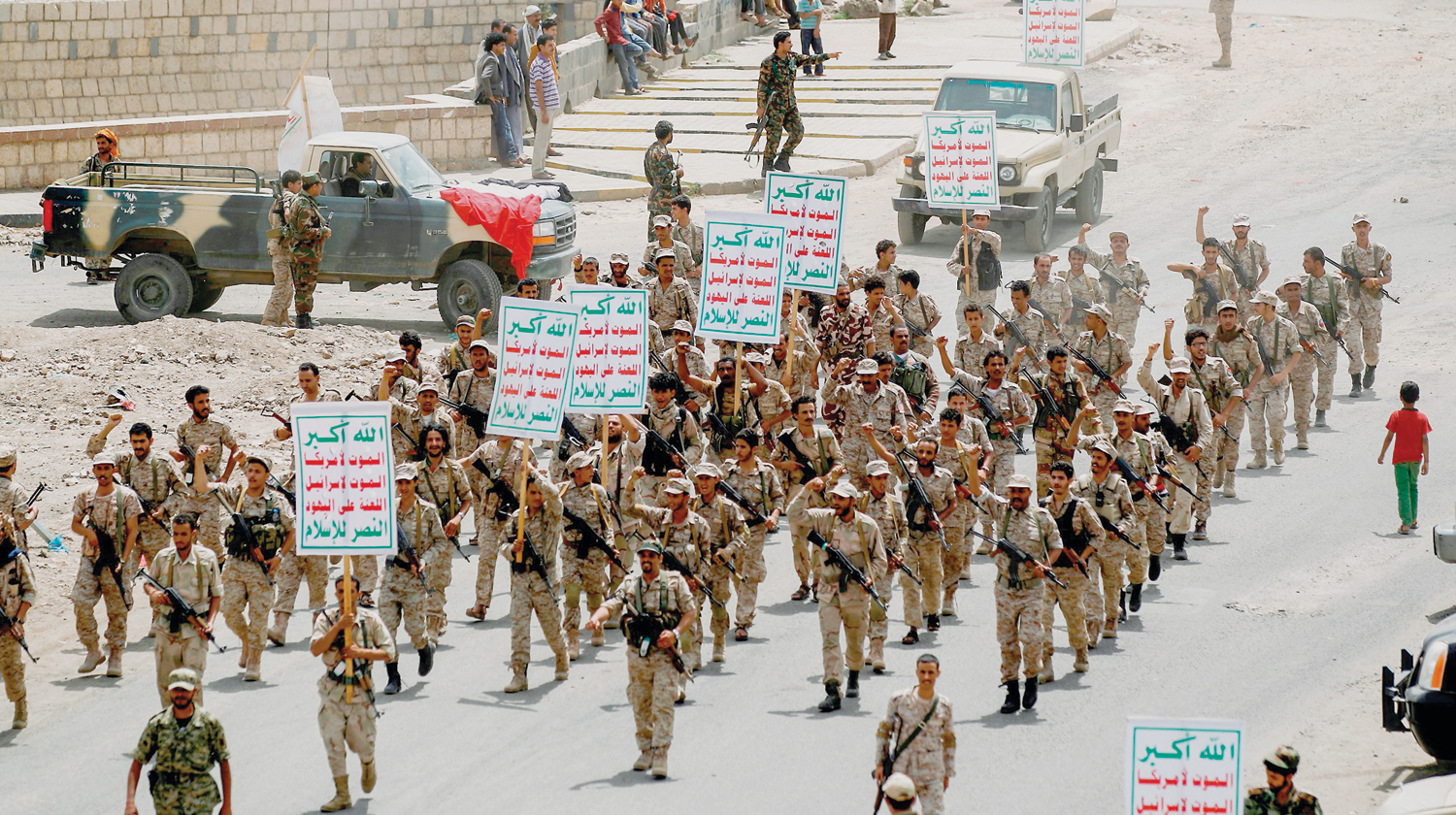

SANAA: Like most residents of Amran, a strategic gateway to Yemen’s capital Sanaa, Mohammed al Najri thought the capture of his city by Ansar Allah fighters five years ago would not last long. But fighting quickly spread to most areas of the country, plunging the most impoverished nation into a devastating conflict that is yet to end. Fifty kilometres north of Sanaa, Amran was taken by the Ansar Allah on July 8, 2014. It was the first major city to fall, in a military campaign that saw the fighters seize vast swathes of Yemen from the internationally recognised government. At the education ministry office in Amran where he works, Najri has gone without his salary ever since the beleaguered government two years ago moved the central bank from Sanaa to Aden, its makeshift capital.
“Five years have passed since the war broke out, but we know there is still a long way to go,” the 40-year-old civil servant said by telephone. “Our situation has deteriorated ... We have reached rock bottom. Everything has collapsed,” he said. Mohammed Taha, 48, a journalist from Amran who has continued to cover his home city since the Ansar Allah seized it, does not even consider the possibility of peace. “Five years of war were sufficient for me to adapt and adjust my life and that of my family accordingly,” Taha said. “Yes, we were affected by the war at the start, but we were able to live with its consequences. I no longer care if it continues or ends,” he said.
The United Nations says Yemen is experiencing the world’s worst humanitarian crisis, warning that millions are on the verge of famine. Thousands of civilians, including hundreds of children, have been killed and tens of thousands wounded. Essential health, education and other services have all but collapsed, especially since a coalition intervened in March 2015 in support of the government. In Amran, fighters carrying automatic rifles remain vigilant day and night, while revolutionary slogans are daubed everywhere on the old city’s brown buildings made of clay and stones. “Death to America, Death to Israel, Curse on Jews and victory for Islam,” reads one slogan.
Two Yemeni government officials said that when Amran fell into the hands of the Ansar Allah, no one was aware of the fighters’ plans to take their military campaign to Sanaa and other regions. Beyond the city limits, Amran is a key province in Yemen historically, boasting important archeological landmarks, including the 100-year-old Shaharah Bridge — meaning the ‘bridge of sighs’ — which links two mountains. It is also home to Raydah town, where the last of Yemen’s Jews lived, before they made their way to Israel in 1949-1950 in a secret airlift dubbed “Operation Magic Carpet”.
Amran occupies a strategic location between Sanaa and the fighters’ stronghold of Saada in the far north. It is also home to the Hashid, Yemen’s most powerful tribe. The Ansar Allah overran government forces in Amran after a two-month siege and then moved south, capturing the capital in September 2014 before pushing into other parts of Yemen. — AFP
Oman Observer is now on the WhatsApp channel. Click here



